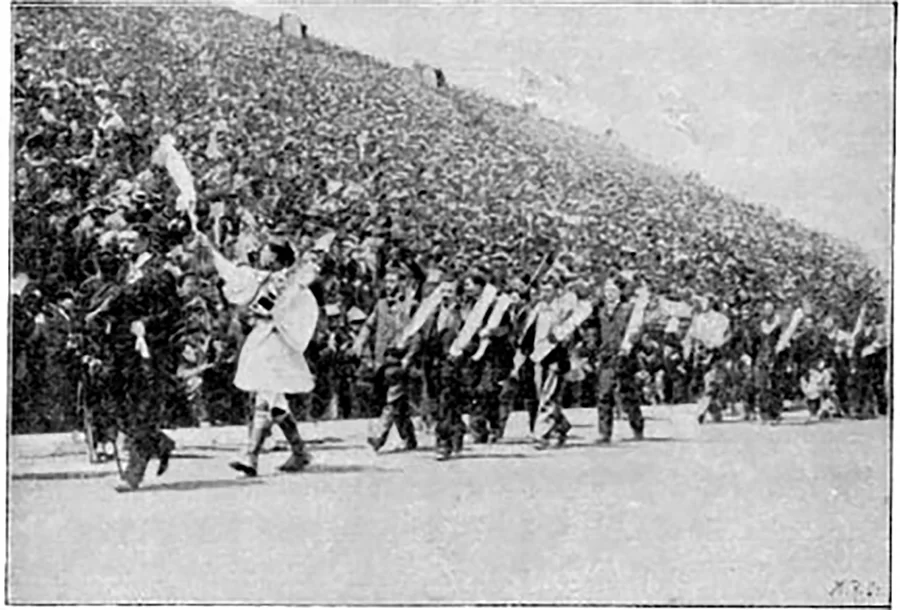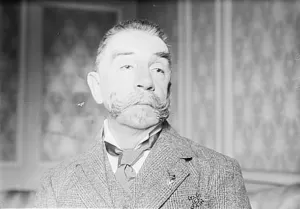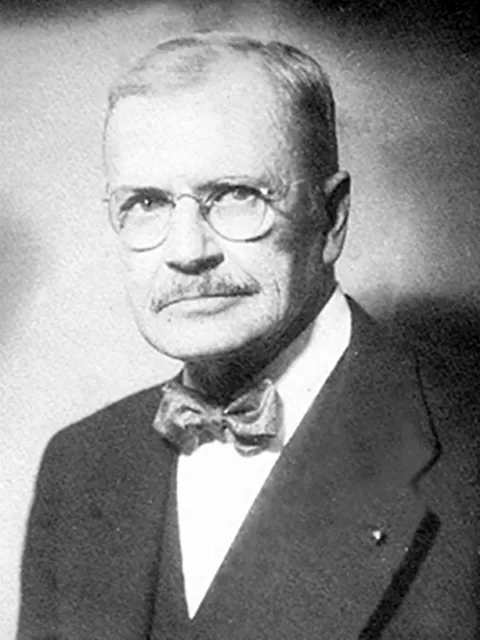Lost Olympic Art Competitions
by Kate Nixon
A photo of the Olympic participants during the 1896 Olmpic Games in Athens, Greece. Prior to 1954, the Olympic Games had competitions in art categories in addition to athletic. The photo has been enlarged by the editor for easier viewing. Photo courtesy of Wikimedia Commons.
This Friday, the Olympic Games kick off in Paris — and for all the excitement that an Olympic competition brings, I nearly forgot about it. I’ve been immersed in my online conference and briefly allowed myself to come to the surface of an ocean of online logistics, where I finally remembered that was happening. The opening ceremony especially tends to be a favorite of mine. On a whim, I decided to get online to see if there was a connection between the Arts and Crafts movement and the Olympic Games. I ended up finding out about an Olympic factoid I would have never known about: a couple connections to Brooklyn, New York and a man who won medals for America in both sport and art!
Prior to the 1954 Olympic games, the original Olympic games included competitions in architecture, painting, sculpture, literature and music. While the games of Greek Ancient history were a festival held in Olympia, the first modern day Olympic games took place in Athens in the year 1896. The man behind it? A french man by the name of Baron Pierre de Coubertin who pitched it not only to be in Paris in the year 1900, but to include the art categories. Officials loved the idea and wanted the event moved up to 1896 and in the 1912 games in Stockholm, Sweden, the Olympic art competition began.
American Olympic gold medalist Walter Winans. Photo courtesy of Wikimedia Commons.
According to an article from The Atlantic on the same subject written by Ashley Fetters, the art entries were required to create works with the athletic spirit of the Olympics. But where is the evidence of the Olympic art competitions aside from website Olympedia? Fetters says “Few artists of note ever competed in the Olympic art competitions because professional artists were prohibited from entering; thus, among the best-known winners of Olympic medals for art are the American architect Charles Downing Lay and one Joseph Webster Golinkin, a lithographer whose oeuvre included designs for a number of American stamps.”
So much for hopes of seeing a Rookwood artist, Weller or Roseville, Stickley, or a Greene and Greene name next to an Early 20th Century medal. Perhaps we can only whet our appetite on delving through the evidence of the World’s Fair and International Expositions.
By now, the list of Olympic winners are listed online via a handful of websites for each country. Here’s a summary of America’s Olympic medal winners in the Arts categories:
- In the 1912 Summer Olympics, American-born Walter Winans was one of only two Olympians who won multiple Olympic medals in two different categories: one each for a sport and one each for an art category. Winans won a gold medal for his marksmanship in shooting. He also won a gold medal for his sculpture An American Trotter. The gold medalist, marksman, horse breeder, sculptor and painter also added author to his experience — he wrote 10 books during his lifetime.
- 1932 was a banner year for American medals. Since the Olympic Games took place in Los Angeles, we can see why. In the 1932 Los Angeles Olympics, American artists won gold and silver medals: Lee Blair won the Gold Medal for his work in Watercolor titled”Rodeo” and Brooklyn-born cartoonist and illustrator Percy Crosby won for his drawing “Jackknife”. 1932 was also the year Joseph Golinkin won a gold medal for the US for his print Leg Scissors and artist and teacher at Pasadena’s School of Fine Arts Ruth Miller won a Silver medal for her painting “Struggle.” Artist Mahonri Young won the gold for his sculpture The Knockdown.
- Additional American medal winners include John Russell Pope for the Payne Whitney Gymnasium in New Haven and Frederick MacMonnies – a representative for the Beaux Art Movement – won a 1932 silver medal for his sculpted “Lindbergh Medal” to commemorate Charles Lindbergh’s transatlantic flight.
American landscape architect Charles Downing Lay won a silver medal from the 1936 Berlin Olympic Games for the planning of Brooklyn, New York’s Marine Park. Photo courtesy of Olympedia.
In 1936, the Olympic Games were held in Berlin and Germany certainly had the homefield advantage with 29 German judges on a panel of 41. Despite the advantage, American landscape architect Charles Downing Lay won a silver Olympic medal in Architecture for city planning in the first medal won by America that year. His winning work? Marine Park in Brooklyn, New York.
The plan was presented on a forty-five square foot canvas: an oil painting that proposed replacing acres of salt marshes with recreational areas and athletic greens and a canoe harbor. Additionally, the plan created space for a zoo and a theatre — and according to the Marine Park Association, a potential casino! Sadly, because the plan would cost around $40 million dollars, the plan was adjusted.
For a look at the winning plan, click here to visit the Marine Park Alliance website.
For those eagle-eyed collectors who may have further research connected to the Olympic games, please let me know!
.



